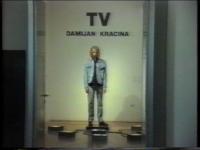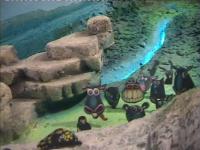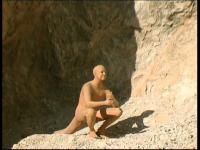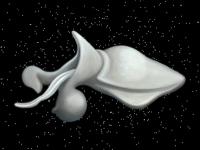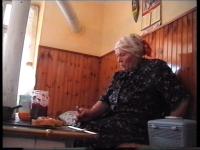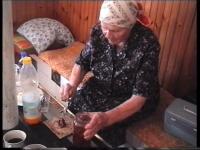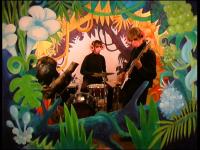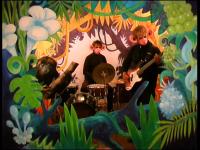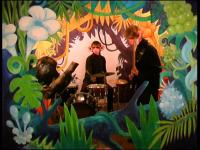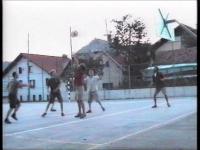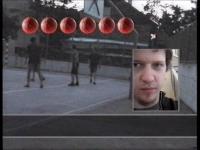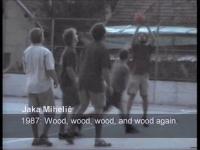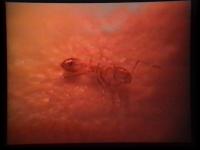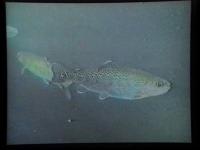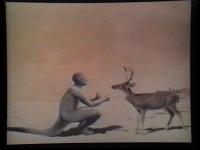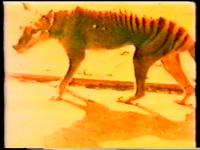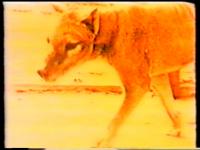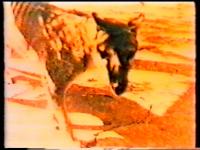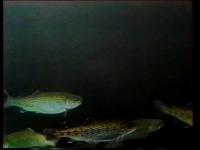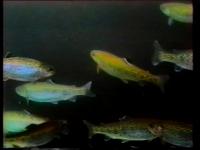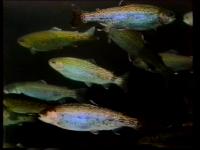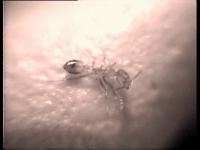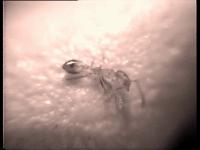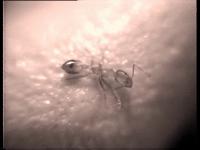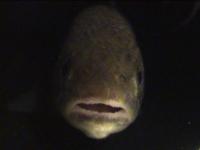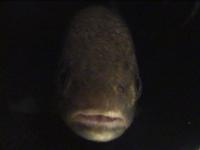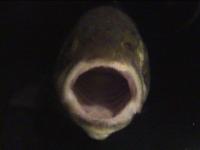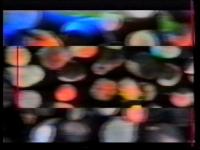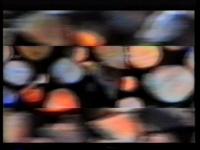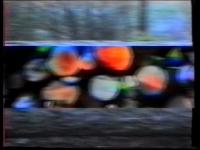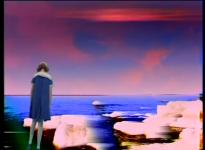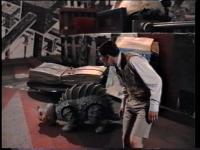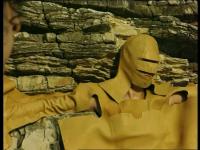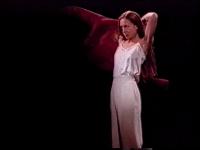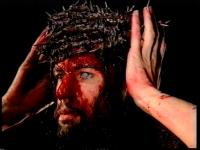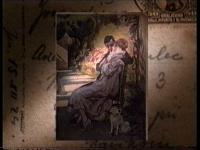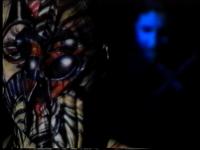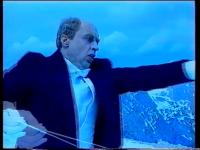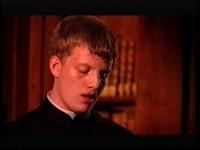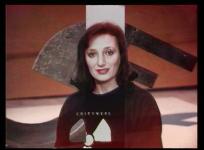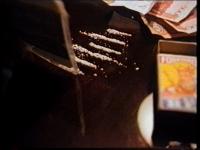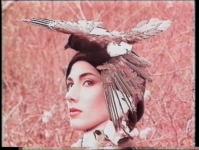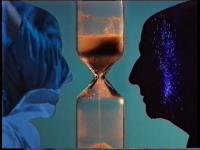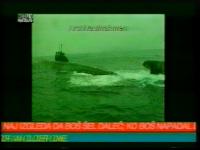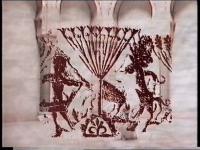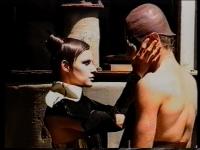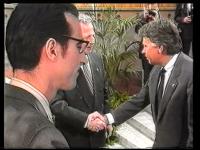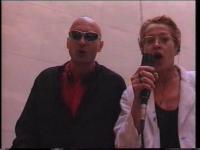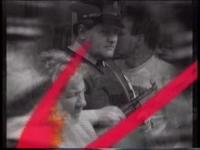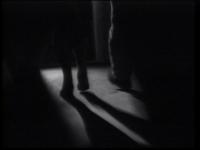A hyper-realistic latex sculpture of the artist stands in the middle of a room in Kapelica Gallery, where the artist first presented the installation. The sculpture’s low pedestal is connected to seven monitors into which the figure gazes, while light boxes show photographs of cats run over by cars. The installation shows death doubled, or the absence of life. The cats are dead, and the statue, too, is lifeless. The images of dead cats not only draw attention to the cruel human attitude to animals and the cost of the human desire for speed, but also criticise the media’s portrayal of reality. The bloody cats remind us of the bloody television scenes presented to the viewers on a daily basis. Usually, shocking, bloody and spectacular television reports on the suffering of other creatures do not provoke powerful reactions, but are passively received. The ‘reality’ of TV images does not prompt ‘action’. Animals are the central motif of the artist’s work.
Production: 2005
The video was created for a joint exhibition by Leban and Kracina entitled Galapagos. We see close-ups of an artificial installation of Galapagos Island, with a volcano at its centre. When individual animal species or motifs appear, the shots of the Islan...
Production: 2004
Are you familiar with that tingling feeling somewhere that emerges around the root of your tongue when you eat marmalade without bread and butter? The marmalade sticks to your palate and its taste lingers in your mouth for a long time. It's that spec...
Production: 2004
This music video with Damijan Kracina on bass and Vladimir Leben on drums was first a video performance in an installation in which the scenery simulated the ape’s natural habitat, similarly to what is done in TV documentaries. The video is exhibite...
Production: 2001
A group activity – playing basketball in public. All the participants hold the rights to show the video: Borut Korošec, Jaka Mihelič, Damjan Švara, Grega Kregar, Damijan Kracina, Mojca Senegačnik, Katarina K. Toman, and Sara Hughes. Be...
Production: 2000
The video summarises the basic motifs of the artist’s work: endangered species and fantasy animals of the future. It comprises an omnibus of five individual video pieces and additional raw video footage. First, we see ‘proteus’, a comput...
Production: 2000
The video reconstructs the movements of the Tasmanian tiger (Thylacinus cynocephalus), which became extinct in 1936. A year before the video was created, the Australian Museum in Sydney began developing methods for preserving the genetic material of the a...
Production: 1997
Underwater footage of a flock of rainbow trout, one of the species that, due to man's excessive and irresponsible exploitation of nature, began to displace the Soča trout. The swimming fish opening their mouths are silent witnesses of human actions. &n...
Production: 1997
The video shows the last minute in the life of a dying ant which is stuck on an adhesive surface. At exhibitions, the static footage is presented on a miniature screen, with the ant practically life-size. The author discusses human irresponsibility and me...
Production: 1997
A clip from the compilation Zoospective shows underground footage of the Soča trout, which is endangered due to irresponsible human behaviour and farming of trout, which is an invasive species in the natural habitat of the local species. The trout looks...
Production: 1996
The video consists of three parallel strips showing the same footage in different time frames. It seems that we are following a video of the countryside shot from a moving car. The upper and lower strips follow the same timeline, while the strip in the ce...
